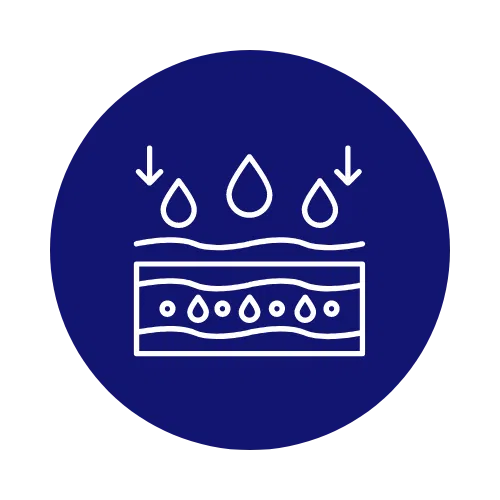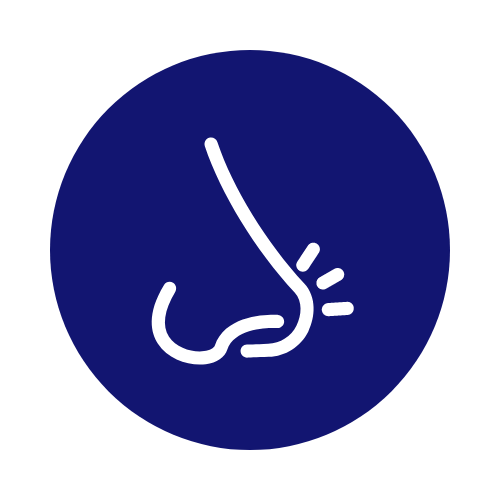In the constant battle to maintain, restore, and enhance fresh-looking skin, we believe that Restylane is the best dermal filler for the job.
Your skin is amazing. It provides an ever-present barrier between your body and the environment. It has to combat ageing; the effects of the weather, and lifestyle choices, such as smoking. As we age it becomes more of a battle to maintain youthful, fresh-looking skin, and this is when we turn to medical aesthetics for a helping hand.
At Eden Medical, we believe that Restylane is the best dermal filler to use in these circumstances, for several reasons.
What is Restylane?
Restylane is a dermal filler manufactured from Hyaluronic Acid. This is a substance manufactured naturally by your body but, as you age, the production of this material diminishes, leading to thinner, less hydrated skin and resulting in a loss of radiance.
How Does Restylane work?
Restylane is a patented form of Hyaluronic Acid in a gel which performs several tasks when injected into the skin.
- It ‘curls’ wrinkles and adds lift and support where needed.
- It attracts water molecules and binds them in the skin. This results in more hydrated skin and, subsequently, a fresher, more youthful appearance.
- It replaces volume lost to ageing.
- It shapes and defines the facial contours.
- It adds volume and contour to lips with a natural, balanced look.
- It can help to gradually improve the condition of your skin by increasing elasticity and reducing fine lines and wrinkles.
Restylane Compared to Other Fillers
Restylane stands out in the crowded market of dermal fillers due to its unique composition and properties.
Unlike some fillers that use synthetic materials, Restylane is based on a naturally occurring substance in the skin, hyaluronic acid, which ensures better compatibility and fewer reactions.
Compared to other popular fillers like Juvederm, Restylane offers a more granular texture, making it ideal for fine lines and detailed shaping. Its results tend to be more precise and predictable, a crucial factor for treatments like lip augmentation.
Additionally, the effects of Restylane are long-lasting, often up to 12 months, providing a durable yet natural-looking enhancement.
Best Areas to use Restylane?
The most common areas treated with dermal fillers are:
- Nasolabial folds or laughter lines – these run down the side of the nose to the mouth
- Marionette lines or oral commissure lines – these lines run down from the corners of the mouth and give a stern appearance.
- Cheek enhancement – as we age our faces start to sag because the fat under the skin decreases and migrates downwards. Dermal fillers can be used to plump the cheeks up.
Is Restylane a Safe Filler to Use?
Restylane has a much lower chance of an adverse reaction because it is made of material that is already found naturally in the body. However, if you are expecting or nursing a baby, you should not receive this treatment.

Potential Side Effects
Most side effects resulting from the use of dermal fillers are directly related to the injection site rather than the injected material. These include:
- Swelling
- Redness
- Pain
- Itching
- Discolouration
- Tenderness
All of these symptoms should resolve themselves within 2-7 days.
If you suffer from cold sores, dermal fillers may cause an outbreak so you should ensure that you have an oral prescription beforehand.
Restylane for Different Skin Types and Ages
Adaptability Across Ages and Skin Types
Restylane stands out as a versatile dermal filler suitable for a wide range of ages and skin types. In younger individuals, typically in their late 20s to early 40s, Restylane is used to address early signs of ageing, such as fine lines or to enhance specific features like the lips and cheeks. The goal in younger skin is often subtle enhancement and preventative care, maintaining a natural look while slowing the progression of wrinkles and volume loss.
For skin that is more mature, typically found in people over 40, Restylane is essential for more thorough rejuvenation. It effectively addresses the common age-related issues of deeper wrinkles, noticeable volume loss, and sagging. In these situations, Restylane helps restore and contour the facial structure in addition to filling in wrinkles, giving the appearance of youth and freshness.
Tailoring Treatments to Individual Needs
The key to Restylane’s effectiveness lies in its ability to be tailored to individual needs. Different formulations of Restylane are designed to work optimally with various skin types, including sensitive, dry, or oily skin, ensuring maximum comfort and efficacy.
For instance, a softer, more fluid Restylane variant might be chosen for delicate areas like under the eyes, whereas a more robust formulation could be used for enhancing cheekbones or jawlines. This personalised approach, combined with a practitioner’s expertise, ensures that each treatment aligns with the patient’s unique skin characteristics and aesthetic goals.
To summarise people who want to maintain their youthful appearance or restore volume lost to ageing are drawn to Restylane because of its adaptability to a variety of skin types and ages. To find the best Restylane treatment for a given person’s skin type and aesthetic goals, a consultation with a licenced professional is necessary.
Restylane FAQs
Restylane treatments typically last between 6 to 12 months, depending on the area treated and individual factors like skin type and lifestyle.
Most patients experience minimal discomfort. Restylane products contain lidocaine, a local anaesthetic, to reduce pain during the injection.
Recovery is usually quick, with most patients resuming normal activities immediately. Mild swelling or bruising may occur but typically subsides within a few days.
Restylane works by adding volume under the skin, smoothing out wrinkles and folds. Its hyaluronic acid composition attracts water, which helps maintain the plumpness.
Most people see immediate results after a Restylane treatment. The full effect is noticeable once the swelling subsides, usually within a week.




















